InterNations Makes a Difference in December
Last month, InterNations went completely MADD – and we are very happy about this. Don’t worry! You needn’t be concerned for our general sanity. MADD is short for our new “Make a Difference in December!” campaign. Just in time for the holiday season 2013, we initiated community involvement in 16 cities worldwide, from Bangalore to San Salvador.
 At various InterNations Events around the globe, we raised funds and donations in kind on behalf of more than 15 non-profit organizations, often cooperating with our established Volunteer Program in the respective communities. All in all, we are proud to announce the following:
At various InterNations Events around the globe, we raised funds and donations in kind on behalf of more than 15 non-profit organizations, often cooperating with our established Volunteer Program in the respective communities. All in all, we are proud to announce the following:
• According to our latest numbers, nearly 3,000 members got involved.
• Over €14,500 were donated to charity.
• We received about 300 items, especially toys and books, as Christmas gifts for children in need.
• Over €14,500 were donated to charity.
• We received about 300 items, especially toys and books, as Christmas gifts for children in need.
The lion’s share of the donations came from a very impressive campaign organized by the Beijing Activity Group in our Volunteer Program. They invited the members of our Local Community in the Chinese capital to donate goods for a charitable Christmas Bazaar, for example, at our InterNations Christmas Party at the Hotel Kempinski Beijing.
The gifted items were then sold over a period of more than six weeks, from mid-November till early January – thus earning literally thousands of euros for Beijing Stars and Rain, China’s first NGO dedicated to children with autism and their families. On behalf of these kids and their parents, we’d like to send a heart-felt xièxie (‘thank you’) to everyone who contributed to this effort!
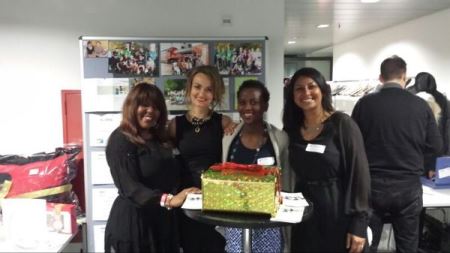 Moreover, we also want to thank all the people in plenty of other communities who shared their time, money, or effort to make the holiday season a little brighter for others, particularly for impoverished and disadvantaged children, people with disabilities, and refugee families.
Moreover, we also want to thank all the people in plenty of other communities who shared their time, money, or effort to make the holiday season a little brighter for others, particularly for impoverished and disadvantaged children, people with disabilities, and refugee families.
More “Make a Difference in December!” Events and Activities took place, for instance, in Bangalore, Beirut, Budapest, Cologne, Dallas, Heidelberg, Lusaka, Miami, Minneapolis, Panama City, Quito, and San Salvador.
In Munich, seat of the InterNations Office, our Activity Group came up with a prize raffle to benefit the residents of a local accommodation for refugees from warzones like Afghanistan, Iraq, and Syria. The support for Santropol Roulant Montréal, a meals-on-wheels organization assisting the elderly, met with great approval from the NPO, and the Lima Community’s donation drive for the Peruvian Westfalia Orphanage even made the headlines in the English-language expat press.
Not only are we proudly looking back on our achievements; we are also planning ahead for 2014. There will probably be a bigger and even more successful repeat performance of “Make a Difference in December!” at the end of this year. 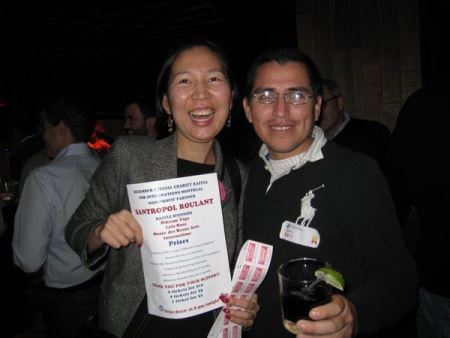 However, let’s not forget that there are always other people in urgent need of aid and assistance – not only during the festive season, but each and every day.
However, let’s not forget that there are always other people in urgent need of aid and assistance – not only during the festive season, but each and every day.
 However, let’s not forget that there are always other people in urgent need of aid and assistance – not only during the festive season, but each and every day.
However, let’s not forget that there are always other people in urgent need of aid and assistance – not only during the festive season, but each and every day.
If you’d like to offer your help and have a positive impact on society, here’s your chance to “give back” to your community. Read more about theInterNations Volunteer Program and see if there is a group in your city, where you can collect donations, come up with ideas for fundraising drives, go for a “hands-on” approach, or become a mentor for someone.
As British statesman Winston Churchill once famously said: “We make a living by what we get, but we make a life by what we give.”
Money, Money, Money: The Ten Priciest Places Worldwide
One of the most popular small talk topics among new arrivals in Munich is – no, not their alpine exploits in the nearby mountains, or even the quantity of beer they may have imbibed at the last Oktoberfest. Instead, it’s the size and location of their flat, as well as the cost of their monthly rent. I’ve noticed this at private parties; observed in the InterNations Local Forum, and even overheard it at our company office.
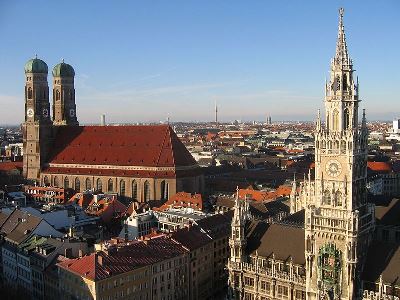 Among Germany’s major cities, Munich is rather infamous for its upscale property market and the local cost of living, which drives up expenses especially for housing and leisure. However, we denizens of Munich should perhaps consider ourselves lucky still.
Among Germany’s major cities, Munich is rather infamous for its upscale property market and the local cost of living, which drives up expenses especially for housing and leisure. However, we denizens of Munich should perhaps consider ourselves lucky still.
Currently, a list of the most expensive cities in the world is going viral, hitting popular sites from the online newsroom Business Insider to the opinion leader Huffington Post. Munich doesn’t quite make it among the Top 30 yet.
The ranking is based on crowd-sourced data from the cost of living calculator provided by Expatistan, a site describing itself as the “Wikipedia for prices” round the world. Unlike the well-known cost of living surveys published by HR consultants such as Mercer, their list offers few surprises: it doesn’t take “outliers”, for example, Luanda (Angola) or N’Djamena (Chad), into account, where costs to ensure the safety and living standards of foreign assignees are traditionally high.
This ranking is rather dominated by the usual suspects: global metropolises renowned for their urban vitality and hip creativity, their architectural or scenic beauty, their booming economy and international outlook. The world’s most expensive cities are situated in France, Scandinavia, Southeast Asia, Switzerland, the UK, and on the US East or West Coast. The Top 10 are as follows:
• London
• Oslo
• Geneva
• Zurich
• New York City
• Lausanne
• Singapore
• Paris
• San Francisco
• Copenhagen
• Oslo

• Geneva
• Zurich
• New York City
• Lausanne
• Singapore
• Paris
• San Francisco
• Copenhagen
Some of these places have a widespread reputation for generally above-average salaries and an accordingly high standard of living. This applies particularly to destinations in Norway and Switzerland. In others of the abovementioned cities, the steadily rising living expenses have long since become a hotbed for debate in local controversies. Rental costs and housing prices in particular are often singled out as targets.
For instance, critical voices from London point out that large swathes of the metropolitan area should be marked as “barely affordable” for average income earners and “unaffordable” for low-income households. Purchase prices for London housing have allegedly jumped by an annual 14% over the last few years; there are also sporadic reports about rents for similar flats in the same neighborhood that suddenly increase by £50 or from £100 one month to the next.
In San Francisco, local tenant organizations lament the fate of long-established neighborhoods and communities. The bitterest critics claim that the city is slowly but surely turning into a “dormitory town” for top-earning young professionals who commute to work in Silicon Valley.
Obviously, a housing and pricing bubble will affect plenty of residents: families with several children will struggle to find spacious, yet reasonably priced accommodation; people working on the lower echelon of the service sector may be driven from their old home when the next raise in rent is due.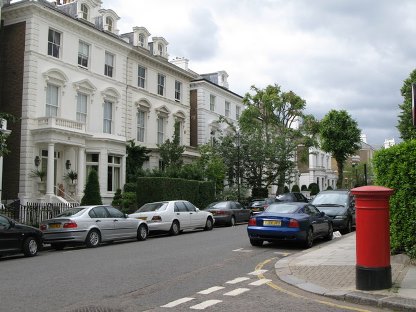

But a sizeable number of expats, or potential expatriates, might not be immune to the financial sacrifices required by these international hotspots, either. Today, global mobility is within the reach of more well-qualified and dynamic people than ever, fueled by both practical interest in getting work experience abroad and the more abstract lure of a cosmopolitan lifestyle. Relocation across borders, oceans, and continents is no longer the domain of the diplomat and the executive.
However, not every person who dreams of “making it” in New York City or the Bay Area is lucky enough to be a Wall Street banker or an IT whiz about to found the next Google.
Will such people have to defer this dream and think less big (and less international) in the future? Will thriftiness become another small talk topic of choice, or will we continue to make do in order to fulfill the vision of global city life? We will see.
What about you? Have you ever changed your relocation plans, or become disenchanted with your destination due to the high cost of living? Or do you think that the benefits of an expensive metropolis outweigh the costs?
(Source for the Top 10 city ranking: Expatistan.com)
(Image credit: 1) Munich Panorama by Wikimedia Commons user Bbb 2) Oslo Opera House by Wikimedia Commons user Helge Høifødt 3) Residential Street in Kensington, London by Mike Quinn for the Geograph Project)
(Image credit: 1) Munich Panorama by Wikimedia Commons user Bbb 2) Oslo Opera House by Wikimedia Commons user Helge Høifødt 3) Residential Street in Kensington, London by Mike Quinn for the Geograph Project)
Filed under: Moving to Another Country, Polls & Surveys, Press & Media on January 16th, 2014 | No Comments »
Founder’s Diary: Ankara
My very last visit to an InterNations Community in 2013 took me to Ankara, the capital of Turkey. When I set out on my three-hour flight from Munich, I was a bit worried about the current political situation.
After all, since the original protests against the new development plan for Taksim Gezi Park (Istanbul) that began last May, Turkey has experienced a variety of demonstrations concerning a wide range of government policies and social issues. However, despite the travel warnings I’d read about unrest in the seat of the Turkish government, I fortunately had a very peaceful trip ahead of me.

When touching down at Esenboğa International Airport, I noticed immediately how different central Turkey is from the coastal areas I’d visited lately. Instead of Mediterranean shores, I saw from above the dry, brownish and reddish plateau surrounding the metropolis. It almost looked like a desert, but then I was surprised to find that it’s actually rather cool in winter – no wonder, as the “Heart of Turkey” is located almost 1,000 m above sea level.
From the airport, I headed right away to the hotel where the InterNations Event was to take place. Tugce and Basel, our Ankara Ambassadors, had planned the perfect way of ending the old year with a bang, so to speak. They’d organized an elegant gala ball with classical live music and black tie dress code, i.e. evening gowns for the ladies and tuxedos for the gents.
 The Mona Hotel – the grand event venue – had opened fairly recently, so the location wasn’t only sleek and chic, but brand-new to boot. Cem, the Mona’s general manager, gave me a warm welcome to Ankara before I was off again in order to explore the city for a bit.
The Mona Hotel – the grand event venue – had opened fairly recently, so the location wasn’t only sleek and chic, but brand-new to boot. Cem, the Mona’s general manager, gave me a warm welcome to Ankara before I was off again in order to explore the city for a bit.
The hotel is situated in Kavalkıdere neighborhood, with its tree-lined streets, public parks, bars, and cafés, as well as Ankara’s busiest shopping avenue, including an upscale luxury mall. In the wider area of Çankaya district, you’ll also find most foreign embassies and more of the city’s five-star hotels. Although I didn’t have much time before the ball started, I got at least a good first impression of downtown Ankara during my stroll.
Before the main event, though, I seized the opportunity to have dinner with our InterNations Ambassador team in Ankara at the Mona Hotel. Tugce and Basel have very eventful and interesting personal histories, and it was a delight to meet them in person at last.
Tugce is a self-described “free spirit” with a professional background in the tourism sector. However, her rather unusual CV includes, for instance, a job as a sommelière on a luxury ocean liner, a stint in PR, a degree from a film academy in New York, and a career change to now work in IT and digital movie-making.
Basel is a Palestinian Greek born in Gaza, who has lived in Palestine, Jordan, Greece, and Austria, before he moved to Ankara several years ago. (Actually, he claims that his skills in Turkish, Arabic, and Hebrew are now much more fluent than his Greek). He works as a medical doctor and is training to specialize in surgery at one of Ankara’s hospitals.

Both Basel and Tugce are clearly very social people, who love networking, getting to meet new people, and bringing others together. They were very enthusiastic about their position as InterNations Ambassadors, and we talked for a while about the development of the Ankara Community.
The local chapter of InterNations has now over 3,800 members, and Tugce and Basel put in a lot of time and effort to organize fun events in the citiy’s nicest venues. They shared their pride in watching the community grow, but also the challenges they face from time to time.
Around eight o’clock, we moved to the hotel’s ballroom to start our New Year’s Gala. The attendees certainly added to the glamour with their dashing suits and sparkly dresses. While canapés and champagne were being served, a string duo provided a classical soundtrack for mixing and mingling over drinks and toasting to 2014.
Among the 120 members in attendance, I had the chance to talk to people of various nationalities and backgrounds: to expats from Germany, Iran, Iraq, Moldova, New Zealand, Ukraine, Russia, and the US, as well as local members from Turkey; to diplomats, teachers, doctors, entrepreneurs, NATO staff, and even an opera singer. As always, it was fascinating to see what different kinds of people show up for our events.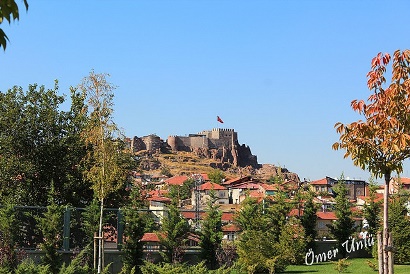

In a short speech, I could officially thank Tugce and Basel for their dedication to their role as InterNations Ambassadors. I’m truly grateful for all the great events they host. Again,teşekkür ederim for bringing the Ankara Community to life! Also, I couldn’t resist encouraging the guests to “branch out” whenever they travel: In plenty of other cities around the globe, more InterNations Events and Activities are waiting for them.
When the formal part of the evening drew to a close at midnight, a group of members was keen on continuing the celebrations, so I decided to join them. We stayed out for most of the night – first at Hayal Kahvesi, a popular concert hall with live music, and later on at If, another great place for live gigs, where a band was playing Turkish and international hits.
Unfortunately, I had to leave rather early for Munich the following day. On the one hand, I was looking forward to celebrating New Year’s Eve proper in Germany, but I regretted that I had caught just a glimpse of Ankara. Oh well, since my trip was really short this time, I have all the more reason to come back to this lively city!
(Photo credit: 1) Kocatepe Mosque Ankara by Wikimedia Commons user Bjørn Christian Tørrissen 2) Mona Boutique Hotel Ankara by monahotel.com.tr 3) InterNations Ankara New Year’s Gala by Galina Haydenova-Mittermann 4) Ankara Castle by flickr user Ömer Ünlü)
The Best Thing about Christmas Markets
As there’s less than a week left until Christmas, I’ll seize this perfect opportunity to talk about one of Germany’s most famous holiday traditions: the Christmas market.
If you have ever been in Germany in early December, you cannot but notice the brightly decorated stalls and tightly packed crowds of people in many a city center. There are literally hundreds, if not thousands, of Christmas markets throughout the country. Nearly every town has a market of its own, no matter how small, and major metropolises may have dozens. For instance, there are up to 50 different ones spread across the various neighborhoods in Berlin.

Though they are an essential part of the holiday season, Christmas markets are – unsurprisingly enough – a fairly secular affair. They go back all the way to the Late Middle Ages, when the burghers of medieval towns bought fresh meat and seasonal food for the winter months. Even in historical documents, you sometimes come across references to trinkets for children, or such popular snacks as roasted chestnuts (still sold as heiße Maroni nowadays).
Today, the ubiquitous Christmas markets have become tourist attractions (which expats living in Germany shouldn’t miss out on), as well as important sources of income for the local economy. About five million visitors flock to Cologne during the advent season, for example, and the Rostock market on the Baltic Sea coast is a favorite destination for tourists from Scandinavia. The concept is actually so popular that it has turned into a hot export commodity. There are now “original German Christmas markets” in international cities from New York to Osaka.
It’s no wonder that lots of German towns and cities vie with one another for holiday superlatives. Several markets lay claim to being the oldest, with Bautzen in eastern Saxony and Munich being the top candidates for that position. (Both markets date back to the 14th century.) Others offer fun-fair rides, huge ice-skating rinks, cultural performances, gay and lesbian or alternative and eco-friendly markets, as well as plenty of records from the tallest Christmas tree to the world’s biggest musical box. By the way, you’ll find the latter in Osnabrück, just in case you’re interested.

All that hullaballoo isn’t the reason why I’m personally fond of Christmas markets. It’s not even the mulled wine that makes me a little misty-eyed and as sentimental as the average character in one of Charles Dickens’ Christmas stories. My attachment is largely based on nostalgia. Last year, I visited the Christmas market in my former hometown, which I hadn’t attended in quite a while, what with being too busy with holiday preparations.
At first, I was strangely disappointed – everything was so different from what I remembered! The merry-go-round for the young ‘uns seemed a tad too noisy and a little too kitschy. The stalls selling holiday decorations, like tree ornaments or folk art from the Ore Mountains, offered nothing more intricate or original than any other vendor. The market still featured the “living nativity scene” that had impressed me so much as a kid, but it was nothing but a couple of bored-looking sheep and a decidedly grumpy camel.
 I wanted to dismiss that feeling of disenchantment as the inevitable result of having visited much more beautiful locations, but it did keep bothering me, and I finally realized why. What I was missing wasn’t anything I would find elsewhere, not even on the biggest and brightest Christmas market of all. As a child, the holiday season had been a time of marvels and magic for me. For my adult self, it was a time full of stress and frenzied attempts to squeeze in some jolly conviviality.
I wanted to dismiss that feeling of disenchantment as the inevitable result of having visited much more beautiful locations, but it did keep bothering me, and I finally realized why. What I was missing wasn’t anything I would find elsewhere, not even on the biggest and brightest Christmas market of all. As a child, the holiday season had been a time of marvels and magic for me. For my adult self, it was a time full of stress and frenzied attempts to squeeze in some jolly conviviality.
Once I’d caught on to that, I told myself, “oh, sod it!” Although I still had presents to buy and errands to run, I decided I needed a break. A live performance of traditional carols presented by an amateur choir was going to start soon, and I stayed and listened. The singers had some trouble to be heard over the noise of the crowd and the din from the merry-go-round; I’m pretty much tone-deaf, but I did suspect that one soloist was somewhat off-key (probably due to stage fright). And you know what? It was still beautiful and – dare I say it? – magical.
Merry Christmas to those of you who celebrate it, and a Happy New Year to everyone! See you again in 2014.
(Image credit: 1) Holiday Decorations at the Straßburg Christmas Market by flickr user dierk schaefer via Wikimedia Commons 2) Christmas Market in Berlin (1897) by Franz Skarbina, public domain 3)Christmas Market in front of Augsburg Town Hall by Wiki Travel user Silvionus123 via Wikimedia Commons)
Filed under: Traditions and Customs around the World on December 19th, 2013 | 4 Comments »
Founder’s Diary: Izmir
Last Friday, on December 6th, I set out for one of my last InterNations-related trips in 2013. In many parts of Germany, as in plenty of other countries, this date has a special significance for kids.
As the 6th of December is the feast day of Saint Nicholas, the patron saint of children, they receive little gifts, like fruit or chocolate, as reward for their good behavior. Of course, most youngsters probably don’t know (or particularly care) that the historical Nicholas was an early Christian abbot in what is today southwestern Turkey. So, what better day was there for me to set out on a visit to our Local Community in Izmir, on Turkey’s western coast?
A 2.5-hour flight from Munich transported me from 0°C and a flurry of snow right into Mediterranean sunshine and a balmy climate of 15°C. No wonder that Izmir – spreading round the waterfront of a picturesque bay – is often nicknamed the Turkish Saint Tropez!

I checked in at the Swissotel Grand Izmir, where the InterNations Event was to take place, but I still had the time to take a walk and enjoy the spring-like temperatures. Strolling down the promenade, I got to see Izmir’s famous landmark, the late 19th-century Saat Kulesi (clock tower) on Konak Square, as well as the bustling bazaar.
While exploring the market, I noticed that lots of vendors didn’t only speak fluent English and German, but also Italian, Spanish, or French, to name just a few more languages. Every year, the city with its roughly 4 million inhabitants houses 500,000 international visitors from the huge cruise ships travelling the wine-dark sea. Fortunately, December is part of the off-season, so the city wasn’t nearly as busy, and I could leisurely sip a mug of Çay, Turkey’s famous black tea, in a little coffeehouse.
The InterNations Event then started at 8:30 pm, at the Swissotel’s Sky Bar, a sleek and stylish lounge which granted us a dazzling view of Izmir Bay and the Aegean Coast. There I met up with InterNations Ambassador Nadejda, a Bulgarian-Moldovan expat from Chișinău, who has been living in Turkey for the past three years.

Nadejda gave a warm welcome to her 80 guests, and the crowd started mixing and mingling soon. When I joined the networking and general introductions over finger food, I encountered quite a few lucky InterNations members whose career had led them to a place as beautiful as Izmir: they work at the NATO headquarters, in the regional mining industry, or as professors in higher education.
While chatting with our expat and local members at official events, it’s always important for me to gather as much open and honest feedback as possible, so we can improve InterNations for them. What were their expectations on joining our community? What would they like to see at future events? How could we make our website more user-friendly for our members? These are some of the questions for which I’m looking for answers.
Well, I was glad to hear that the replies I got in Izmir were overwhelmingly positive. Newcomers liked the nametags since they serve as an “ice-breaker” for starting a conversation and also demonstrate how international the events have become: that night, guests from about two dozen different countries attended the gathering.

Though the Izmir Community is still rather small, it is fairly active. Some members were interested in introducing InterNations Activity Groups for hiking or salsa dancing, for example. But what I heard from most people I talked to was a request for a better mobile usability of the InterNations site. Fortunately, a mobile-friendly experience is already high up on our IT agenda for 2014.
But enough with the “shop talk” already. It was high time to focus on the fun part of the evening and see how much our members were enjoying themselves. The live band at the Sky Bar seemed to have put them into the right mood: As the get-together was drawing to a close, quite a few folks wanted to move on to another location. After all, the night was still young! Thus, I joined them at Tren, a pretty lively local bar, where international and Turkish pop music drew the party-goers onto the dance floor. I can safely say that the residents of Izmir do know how to celebrate.
As I was here to stay for the weekend, I seized the opportunity to invite Nadejda, our Ambassador, to lunch on Saturday. She suggested leaving town in search of a quiet marina with a cozy restaurant. Over a delicious meal, she told me all about the challenges of running the Izmir InterNations Community.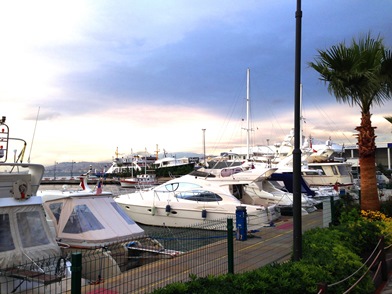

I truly admire and appreciate the effort it must have taken her to grow our events from a tight-knit circle of about 10 attendees to all of 80 or 90 guests. Nadejda, if you read this (as I hope you will), thank you again for your great commitment! Since the Local Community in Izmir counts over 1,400 members by now, I agreed that Nadejda needs someone to help her organize and host the monthly events. She is currently looking for a Co-Ambassador in Izmir, and hopefully, we’ll have a complete InterNations Ambassador team soon.
In spite of my extended lunch, I yielded to the temptation of having dinner at one of Izmir’s great seafood restaurants. If you are in town, you should try the red snapper, along with a glass of local white wine, at Yengec. It’s really worth it! Later on, I met some other InterNations members at En Velo, one of Izmir’s classic clubs, which has been a fixture in the town’s local nightlife for the last twenty years.
When I left Izmir on Sunday, there was so much I would have liked to see or do. The beach parties along the coast are apparently legendary, and I didn’t really have the time to explore the region’s fascinating cultural heritage.  The Agora Open Air Museum preserves some vestiges of ancient Smyrna, and the city is also a popular starting point for tours to Pergamon and especially Ephesus – one of the biggest and most beautiful archeological sites in former Asia Minor.
The Agora Open Air Museum preserves some vestiges of ancient Smyrna, and the city is also a popular starting point for tours to Pergamon and especially Ephesus – one of the biggest and most beautiful archeological sites in former Asia Minor.
 The Agora Open Air Museum preserves some vestiges of ancient Smyrna, and the city is also a popular starting point for tours to Pergamon and especially Ephesus – one of the biggest and most beautiful archeological sites in former Asia Minor.
The Agora Open Air Museum preserves some vestiges of ancient Smyrna, and the city is also a popular starting point for tours to Pergamon and especially Ephesus – one of the biggest and most beautiful archeological sites in former Asia Minor.
Maybe next time I will even make it down the coast, all the way to Demre. This sleepy town was once known as Myra, the home of Saint Nicholas and his final resting place – at least until some sailors from Bari (Italy) stole his relics in 1087.
(Photo credit: 1) Izmir Clock Tower by Wikipedia / Wikimedia Commons user Klingsor 2) – 4) Malte Zeeck 5) Nymphaeum of Trajan at Ephesus by Wikimedia Commons user Radomil)
The International Wedding Planner
Our guest blogger Jessica, a former US expat who recently returned from a prolonged stay in Europe to Washington, DC, describes the difficulties of planning a wedding when the romance in question involves a transatlantic relationship. You can read more about Jessica’s life in DC on her private blog, Adventures of the Repatriate.
This past February, I shared with the InterNations blog my international romance with the “Dutchman”. While many long-distance relationships tend to dissolve rather quickly, this one has stood the test of time.
As of today, the Dutchman and I have traveled a combined 64,000 miles this past year. We have met in Washington, DC and The Hague (our respective homes) and traveled as far as Australia, Spain, and France to be together. We’ve spent many hours in front of the iPad and many euros on plane tickets. On a warm Washington, DC night, at the head of the reflecting pool of the National Mall, he proposed to me as President Lincoln looked on.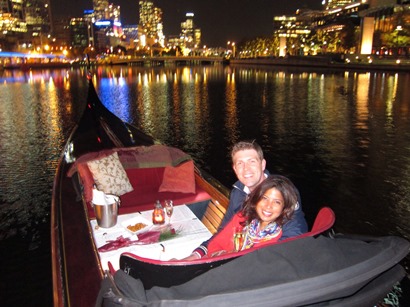

Although the formal proposal was a lovely romantic surprise, the talk about marriage for an international couple can be less romantic. It’s filled with paperwork and coordination. After speaking to a friend who practices/teaches immigration law in the United States and another friend who works for the US Customs and Immigration office, we decided the fiancé visa was the best course of action for us.
The process of obtaining such a fiancé visa is time-consuming, costly, and tedious. We started with a lengthy application process which covers everything from nationality, employment, and income to proof of relationship.
For the proof of relationship, we made a PowerPoint printout of all of our pictures and enclosed receipts of all the trips we booked during our courtship.  Once the package was finished, we both reviewed it several times to ensure all the information was accurate and complete. An incomplete application means a new application must be filed, which means paying the $340 application fee all over again.
Once the package was finished, we both reviewed it several times to ensure all the information was accurate and complete. An incomplete application means a new application must be filed, which means paying the $340 application fee all over again.
 Once the package was finished, we both reviewed it several times to ensure all the information was accurate and complete. An incomplete application means a new application must be filed, which means paying the $340 application fee all over again.
Once the package was finished, we both reviewed it several times to ensure all the information was accurate and complete. An incomplete application means a new application must be filed, which means paying the $340 application fee all over again.
After the application was approved, the Dutchman received a notice from the US Consulate for an interview. He needed to bring his police/medical/birth certificates to the interview, another costly and time-consuming process.
Aside from the expenses and time, the procedure went quite quickly. He received his visa the day after the interview. The timing of the process varies dramatically from country to country. We were fortunate that the whole process (from filing the petition to the issuance of the visa) took “only” around four months.
Now we get to the fun part: the wedding. We decided to have two ceremonies: one for my family in upstate New York and another one for his family and our European friends in Barcelona, Spain. The ceremony in New York will take place in the wintertime in a snowy forest; our European festivities will be on the sands of Barceloneta in Spain.
We’re equally excited about both ceremonies, and we are very grateful that we have the time and resources for all of our loved ones to share this moment together. We plan to live stream the wedding in New York so his parents will be able to witness the festivities from Rotterdam. The perks of modern technology!
 The Dutchman chose the reflecting pool of the National Mall as the site of his proposal because one of his favorite speeches is Martin Luther King’s “I have a dream”. I could not think of a more appropriate place or a more appropriate reason.
The Dutchman chose the reflecting pool of the National Mall as the site of his proposal because one of his favorite speeches is Martin Luther King’s “I have a dream”. I could not think of a more appropriate place or a more appropriate reason.
We both believed in one another, and both of us have made financial and personal sacrifices to be together. The fact that he is willing to move to the US and change his lifestyle (and give up his right to six weeks of annual vacation) completely shows his amazing commitment to me.
Now, here were are: a Puerto Rican woman and a Dutch man, who randomly met in Brussels, have endured the transatlantic distance, time changes, and cultural differences, and are now getting married.
Have you ever arranged an international wedding? What was your experience like?
(Photo credit: Jessica D.)
Filed under: Adventures Abroad, Expat Families & Relationships, Guest Author, Moving to Another Country,Repatriation on November 28th, 2013 | 2 Comments »
Our First InterNations Night in Vienna
Our guest blogger Julie, recently arrived in Europe, shares her impressions of the first InterNations Event that she and her husband attended.
Having moved from Charleston, South Carolina to Vienna, Austria only recently, my husband and I both joined a networking website for expatriates about four months ago. We were hoping it would help us meet new people and offer the chance to make some friends in an unfamiliar city.
We had no idea how active the group was, for when we went to RSVP for one of the events, the guest list was already full! Finally, after three months of living in Vienna, we were able to sign up before an event filled, and so you can imagine our excitement at being able to attend our first official InterNations event.
 On a night with a bit of drizzling rain and glittering city lights, we made our quiet way across the cobblestones of the localStadtpark to the Intercontinental Hotel Vienna. As we were ushered into the lobby, we were warmed by the soft light of a crystal chandelier that filled the entire room, hanging over the elegant wooden bar.
On a night with a bit of drizzling rain and glittering city lights, we made our quiet way across the cobblestones of the localStadtpark to the Intercontinental Hotel Vienna. As we were ushered into the lobby, we were warmed by the soft light of a crystal chandelier that filled the entire room, hanging over the elegant wooden bar.
We had arrived to the One Million Members Vienna Event rather early, so we were lucky enough to find two of the last remaining seats at the bar. My husband handed his blue and white checkered InterNations poker chip to the bartender and ordered a beer; I instead opted for the gin and tonic as my welcome drink.
We toasted ourselves for attending our first expat meeting, and starting scoping out some new contacts. Really we are looking for friends here, but also for professional contacts, especially for my husband, who is looking for a job here now that he has a residence permit.
In any case, we were not disappointed, as we quickly struck up an intriguing conversation with a couple of members behind us. She was a glamorous blonde woman with a chic haircut and red lipstick, and he was a young entrepreneur with a very unique job. We enjoyed chatting with them, about their work, InterNations, and of course, Vienna.
As our first round of drinks began to dwindle, we turned back to the bar to contemplate our next move. We ordered more drinks, and noticed how much the bar was now filling up with what seemed to be predominantly excited professionals.

Before we knew it, we had jumped into a discussion with a young woman from Hungary, who was not only an interesting conversationalist, but was also really friendly. We talked for the better part of the next hour, as it was her first InterNations event as well. The three of us concluded that it was a pretty busy night, with 600 attendees having signed up to come.
But the energy in the group was bright, and soon we had introduced ourselves to two more new faces. One of the most fun things about the group of people at the InterContinental was the variety: everyone had a different story, where they were from, what they did, what they were looking for as members of the expat club. Everyone seemed to have an air of the future, of great things to come thanks to their new-found (and established) connections.
Not only did we celebrate the ambience and company at the One Million Members Event, we look forward to finding great friends and promising opportunities through our new association with InterNations Vienna.
(Photo credit: Olga Stepanova)
Filed under: Guest Author, InterNations Events & Activities, InterNations Stories on November 22nd, 2013 | No Comments »
A Piggy Bank for a Girl Called Suu
Our guest blogger Connie, an expat living in Chiang Mai, northern Thailand, tells us how she became involved with a local grassroots initiative dedicated to helping the Burmese refugee community. She writes about expatriate life in Thailand on her private blog.
Lots of people spend spring break on a beach in Thailand. Not me. Last spring break, I went to a Thai garbage dump. It’s not that garbage dumps are my thing. Quite the contrary. But thanks to a friend I made through InterNations and a chance meeting with a girl named Suu, I’ve been spending more time at a trash dump than I would ever have imagined.
Last spring break, a group of Rotarians in Chiang Mai, where I live, invited me to join them on a service trip to a medical clinic for Burmese refugees run by a remarkable woman named Dr. Cynthia. Dr. Cynthia is sometimes called the Mother Teresa of Thailand. I was eager to meet her and to see her free clinic.
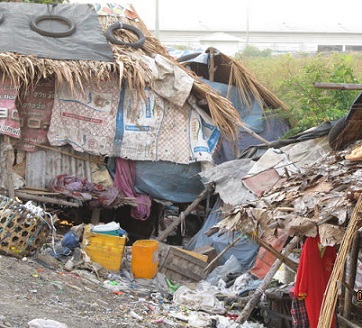 The clinic is located in the city of Mae Sot on the Thai/Burmese border. The trip to the garbage dump was a last minute add-on. One of the women in our group said she had heard there was a community of Burmese refugees, including many children, working and living in the Mae Sot municipal dump. She had been told the community was very poor and in need of everything.
The clinic is located in the city of Mae Sot on the Thai/Burmese border. The trip to the garbage dump was a last minute add-on. One of the women in our group said she had heard there was a community of Burmese refugees, including many children, working and living in the Mae Sot municipal dump. She had been told the community was very poor and in need of everything.
We bought a bunch of children’s clothes and went to the dump. And that was where I met a little girl named Suu. Suu and her mom, along with 500,000 other Burmese, have fled their country to escape the war that has been wrecking the country for sixty years.
Suu and her mom had learned that there was work and a safe (compared to their home) place to live in Mae Sot. The place was the Mae Sot municipal garbage dump. They decided it was better to live with trash than to be treated like trash in their native country. So they moved to the dump, constructed a shack as shelter from the rain, and now sift through the trash to make some money from recycling bits of plastic.
Hundreds of other Burmese refugees also live at the dump even though there are no toilets, food is scarce, and the water is polluted. Often people get sick. The recycler does not pay much, so everyone, including Suu and the other children, work long into the night. Despite working hard, people go hungry. Suu and her mom get by as best they can.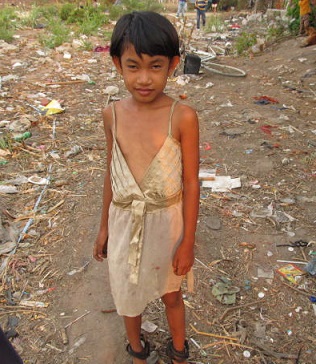

They invited me into their “house” and offered me — by the way they handled it– a precious cup of soda pop. We couldn’t speak the same language, but we communicated anyway. I was touched by their generosity.
Many of the people who flee Burma have little but the clothes on their backs. They labor as illegal immigrants in Thailand and elsewhere and live as unwelcome guests wherever they can. They do the backbreaking labor no one else wants to do. The situation in Burma is changing, but it is still not safe for many refugees, like Suu, to return home due to continued military action over there.
Many people visit the dump when they come to Mae Sot. They take a lot of pictures as though they were in a zoo. “How can people live like this?” they ask with disgust. “Why don’t they go back to their own country?” Suu and her mom and the others at the dump are friendly to all the visitors, even though they do not ask permission to take photos or understand why the refugees live at a dump. What I learned from Suu and her mom is that no one wants to live in a garbage dump, but it is safer and offers more opportunity to work than their home.
At the dump, Suu and her mom and the others can live with less fear and more freedom. At the dump, they have a community. But what they do not have is clean water, sanitation, or much food.

The stench and flies overwhelmed the group of visitors I was with. In addition to the squalor, the fact that the people living at the dump were refugees made the situation seem too complicated to do anything long-term to help. The group also knew that many well-meaning people in the past had seen this poverty and tried to assist but had failed. Unfortunately, the well-intentioned projects the people brought were not discussed with those who lived at the dump. Not being of or rooted in the community, the projects did not gain ground and withered.
After meeting Suu, her mom, and the others, it was impossible for me to walk away without trying to do something that would be effective and not repeat past mistakes. Through a process of trial and error and a lot of research, I eventually met an expat named Christina here in Chiang Mai through InterNations, who had international development experience and an approach that made sense to me.
 It’s an approach that is deceptively simple: in order to do effective development in a community, it’s important to communicate with the people who live there. It’s vital to find out what kind of help the community thinks will be effective and then to partner with it to bring about change.
It’s an approach that is deceptively simple: in order to do effective development in a community, it’s important to communicate with the people who live there. It’s vital to find out what kind of help the community thinks will be effective and then to partner with it to bring about change.
Raising pigs at the dump for extra income to help alleviate hunger is the community’s idea and goal. Pigletsforprogress.org is a grassroots group of progress-minded people, including Christina, the community leaders at the dump, and others like me who want to help the community reach its goal.
I think of it as a piggy bank for Suu.
(Image credit: 1)-3) Connie M. 4) Piglets for Progress)
Filed under: Adventures Abroad, Guest Author, International Aid on November 21st, 2013 | 2 Comments »
Two Essential Steps to Building Your Social Circle Abroad
For many of you, the holiday season is coming up. Especially if you moved abroad with your partner or your family, you might start getting a little pensive and missing your old friends from back home. Our guest author Paul has a couple of helpful tips on how you can make new friends abroad more easily.
As you start to blend in a new city, you start to realize how critical it is to build your social circle. You feel like it’s an essential element of your success and happiness in the new community. And you probably get more sensitive to this around holidays and your birthday.
But, that fantasy of being entirely integrated, with a group of friends that support you, celebrate with you, and make your life more fun and animated, is probably easier to have than you think. Now is the time to stop just fantasizing about it, and start to actually do something; this article will help you start right.
The Key to Success Is to Adopt New Social Habits
If you look closer into the lives of socially successful people, you’ll see that they don’t socialize and get in touch with people once in a while … they do it on a regular basis. The key to success here is repetition.

This is the case because making friends is not a mechanical activity. What you do with one friend will be different from what you do with another. No two relationships are the same. This is why you need to have add the simple tweaks to your habits, and these will get you the friends you want. The ideal situation is to implement these weekly and monthly habits in a way that fits with the rest of your life.
As an expat, the most important part is that you take ownership and control over your social life, instead of leaving it to chance. This means that you get conscious and curious about friendship and how it works; consciously make time, every week, for meeting new people, staying in touch, and hanging out with them.
Step One – Make a Habit of Meeting New People
Let’s face it, you won’t become friends with all the people you meet, no matter how skilled or interesting you are. Not everyone will be compatible with your personality or your style. Add to that the fact that many people have too many friends already and can’t handle any more.
This is why it’s not enough to go meet new people once in a while and expect those friendships to stick. You need to be doing it regularly in order to find the best people for you. This is why I suggest that you develop a monthly habit of going out and meeting people.  Of course, you can do this with your Local InterNations Community. You can also look for other communities around specific areas of interest, like business, sports, or hobbies.
Of course, you can do this with your Local InterNations Community. You can also look for other communities around specific areas of interest, like business, sports, or hobbies.
 Of course, you can do this with your Local InterNations Community. You can also look for other communities around specific areas of interest, like business, sports, or hobbies.
Of course, you can do this with your Local InterNations Community. You can also look for other communities around specific areas of interest, like business, sports, or hobbies.
The most important thing is to not make this “something you do when you have time”. Just put a reminder in your calendar with the events’ dates, and consider it part of your life. If you only do it when you’re pumped, then it won’t work – you have to attend, month-in and month-out.
Step Two – Make a Habit of Connecting Up Your Friends
It’s a fact: people prefer to hang out in groups of more than two, especially around the weekend. Let’s say that a certain John has three friends that don’t know each other (group 1) and three others that know and usually hang out with each other (group 2).
Let’s say that it’s the weekend and John wants to go out; what do you think is easier for him to do? Call the folks in group 1 and see if he can manage to get them all to have the same plans … or call one of the people in group 2 and just jump in whatever plan they already have.  After all, the folks in group 2 are friends and might be doing something together anyway. From my experience, most people will go with group 2 and contact those who are already connected with others, because it’s much easier, and more likely to lead to fun and interesting experiences.
After all, the folks in group 2 are friends and might be doing something together anyway. From my experience, most people will go with group 2 and contact those who are already connected with others, because it’s much easier, and more likely to lead to fun and interesting experiences.
 After all, the folks in group 2 are friends and might be doing something together anyway. From my experience, most people will go with group 2 and contact those who are already connected with others, because it’s much easier, and more likely to lead to fun and interesting experiences.
After all, the folks in group 2 are friends and might be doing something together anyway. From my experience, most people will go with group 2 and contact those who are already connected with others, because it’s much easier, and more likely to lead to fun and interesting experiences.
This doesn’t mean that you’re doomed if you don’t have any friends yet. It just means that you need to gather up the people you meet, and introduce them to each other. All you have to do is get them to meet once or twice, form small circles of three to four people, and the rest will take care of itself.
If you want to make it even easier for you to blend in a new country, it’s best to connect with both locals and experienced expats. This is important because the social circle that you’ll have will include people with different perspectives. If you only hang out with locals, you might feel very different from them; but if you also hang out with other expats, at the same time, it makes it more natural for you to share your unique experiences, without feeling alienated. But don’t limit yourself to the “expat bubble” only!
This will make your social life much easier, as these people will connect and start to suggest plans on their own. You won’t have to be the one making all the calls and arrangements.
Final Words
I hope you’re starting to realize that making friends and building a friend circle is much simpler and easier than it seems. Making friends is a skill, everyone is at a different level, and there is no shame about learning how it’s done. The beauty in these habits is that they work especially well for busy people who don’t have a lot of time and tend to forget to call and make plans others. With a few simple adjustments and habit changes, you can entirely change your social life.
Good luck!
(Paul Sanders writes about how to overcome shyness and loneliness, master conversation and social skills, make friends, and build a social circle. His runs his own website giving advice on how to get the friends you want.)
(Photo Credit: iStockphoto)
Filed under: Expat Advice, Expat Families & Relationships, Guest Author on November 18th, 2013 | No Comments »
Typhoon Haiyan: How You Can Help
One week ago, on November 8th, one of the most intense tropical storms ever recorded hit the east coast of the Philippines and cut a swathe of destruction through the central regions of the country. Since then, we have all heard of Typhoon Haiyan (or Yolanda, as it is called in the Philippines), and numerous images of the resulting devastation have gone around the world.

Here at InterNations, we’d like to extend our deepest sympathies and condolences to those affected by the catastrophe, especially to our members currently living in the Philippines and all Pinoy expats worried about family and friends back home.
So far, the extent of the disaster cannot quite be fathomed. The United Nations is talking about an estimated 4,500 casualties killed by the storm, but this number is expected to rise further as the cleanup efforts are progressing. About 11 or 12 million people live in the areas where Haiyan wrecked its havoc, and over 900,000 of them may have become homeless due to the typhoon.
Various national governments, NGOs, and charitable organizations, as well as countless generous individuals, have already sent financial or material aid. However, relief workers and government officials are faced with several obstacles:  Transport connections to and on the islands of Leyte and Samar, where the typhoon hit first and hardest, have broken down; the increasingly desperate mood among the survivors has lead to sporadic outbreaks of looting and violence, and the fact that many victims couldn’t yet be buried increases the risk of epidemic diseases.
Transport connections to and on the islands of Leyte and Samar, where the typhoon hit first and hardest, have broken down; the increasingly desperate mood among the survivors has lead to sporadic outbreaks of looting and violence, and the fact that many victims couldn’t yet be buried increases the risk of epidemic diseases.
 Transport connections to and on the islands of Leyte and Samar, where the typhoon hit first and hardest, have broken down; the increasingly desperate mood among the survivors has lead to sporadic outbreaks of looting and violence, and the fact that many victims couldn’t yet be buried increases the risk of epidemic diseases.
Transport connections to and on the islands of Leyte and Samar, where the typhoon hit first and hardest, have broken down; the increasingly desperate mood among the survivors has lead to sporadic outbreaks of looting and violence, and the fact that many victims couldn’t yet be buried increases the risk of epidemic diseases.
Nonetheless, there is some good news. Yesterday, international aid finally started to reach some of those people who need it most – particularly in the area of Tacloban, the most populous city in the Eastern Visayas region. The surviving residents are in urgent need of clean drinking water, medication, food supplies, disinfectants, and other basic necessities, but relief efforts will probably take a long while. Large parts of the city have been reduced to debris and rubble.
If you too want to help, here are some recommended relief organizations, which are already active in the region.
• The Philippine Red Cross has deployed assessment, rescue and relief teams to the affected islands. They also cooperate with the Spanish Red Cross and the German Red Cross to augment their relief efforts.
• The American Red Cross has already begun distributing emergency supplies. They also help to reconnect families with missing persons. They are currently accepting donations, which can be made in honor of or in memory of a specific individual.
• The World Food Program is an organization dedicated to bringing food to refugees worldwide, or to those facing hardship after natural disasters. They are, for example, flying out high-energy biscuits, rice, and canned goods to families in the Tacloban area.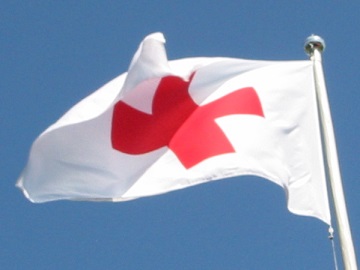

• The International Rescue Committee responds to humanitarian crises around the globe. In the Philippines, they focus on providing healthcare, safe water, hygiene and sanitation kits.
• Doctors Without Borders is sending at least 100 staff members and several planes with supplies to the affected areas. As most local health facilities have been destroyed, they will offer to address urgent and immediate medical needs. For instance, plenty of people will require immunizations to protect them from typhoid fever (often caused by drinking contaminated water).
• UNICEF will be part of the process of rebuilding the Philippines. They care especially for the needs of families and children, mothers and pregnant women. For example, they have already delivered dozens of tents which can be used as improvised schools and safe spaces for kids. Among their aid supplies, there is e.g. folic acid (essential for expecting mothers) or special food to prevent malnutrition in children.
If you should have any information on people living in the affected areas or the whereabouts of a potentially missing person, there are several channels to spread the news:
• Most foreign embassies in the Philippines (e.g. the diplomatic missions of Australia, Germany, the UK, and the US) have set up emergency hotlines for enquiries about expats from the respective nations.
• Google Person Finder has a new section for Typhoon Haiyan/Yolanda.
• There is a group for registered Facebook members where Pinoys worldwide can make enquires about people in Tacloban and surroundings.
• Or just send a tweet to @philredcross via your mobile phone, or post using the hashtag #TracingPH.
If you would like to share specific information with other InterNations members, please leave a comment in this forum thread. Thank you so much for all your support!
(Photo credits: 1) Philippines Flag by Wikimedia Commons user Mike Gonzalez (aka TheCoffee) 2) Map of Leyte Showing Tacloban by Wikimedia Commons user Mike Gonzalez (aka TheCoffee) 3) Red Cross Flag by Wikimedia Commons users Hirski and Joonasl)
(Photo credits: 1) Philippines Flag by Wikimedia Commons user Mike Gonzalez (aka TheCoffee) 2) Map of Leyte Showing Tacloban by Wikimedia Commons user Mike Gonzalez (aka TheCoffee) 3) Red Cross Flag by Wikimedia Commons users Hirski and Joonasl)

No comments:
Post a Comment